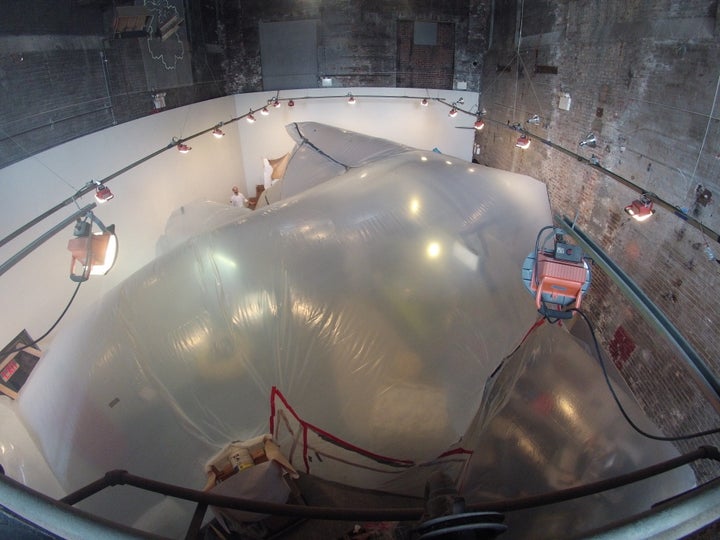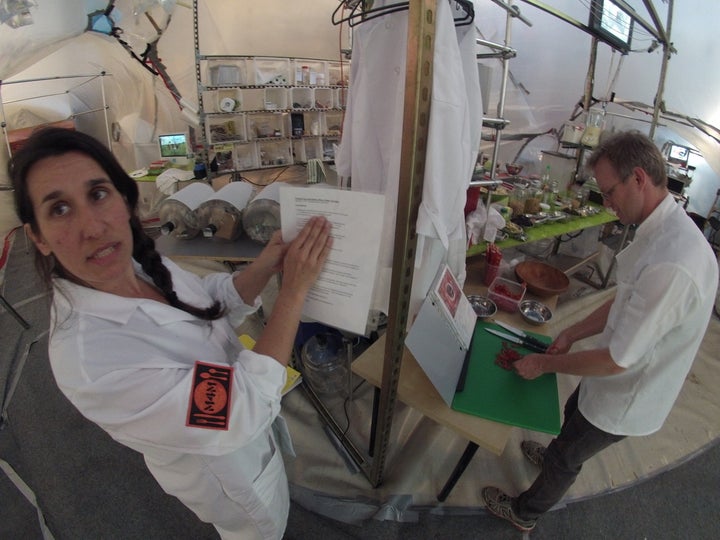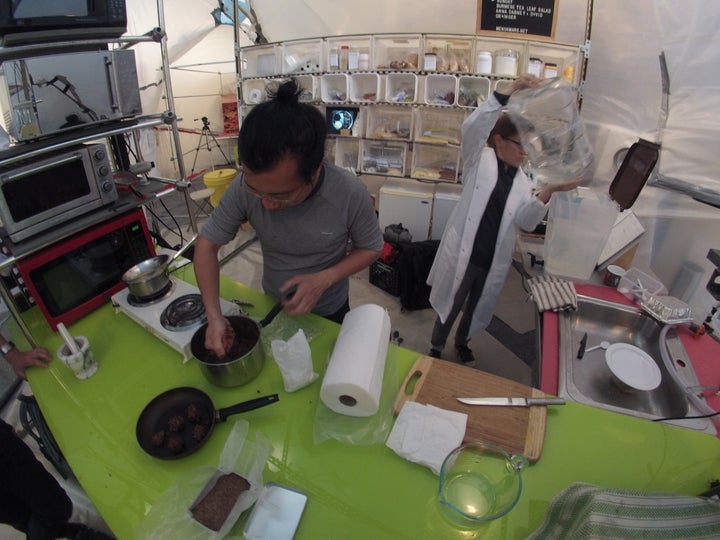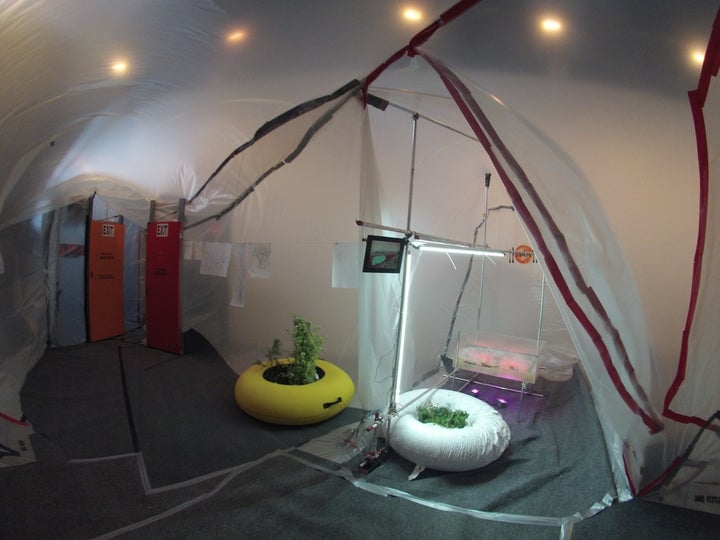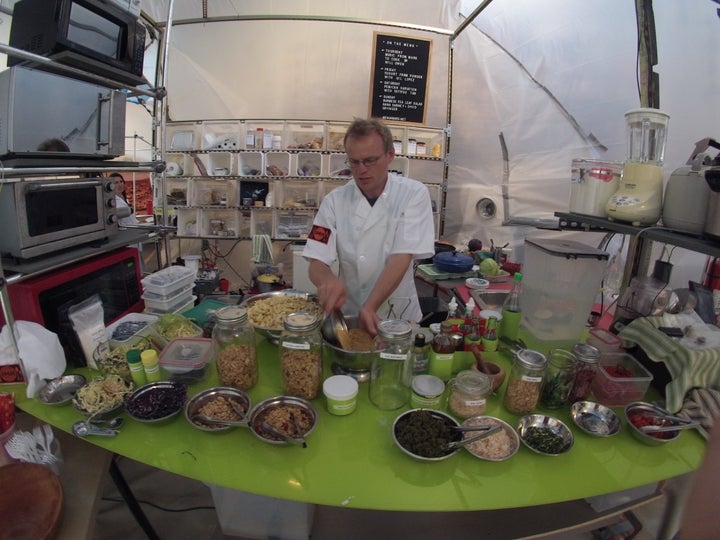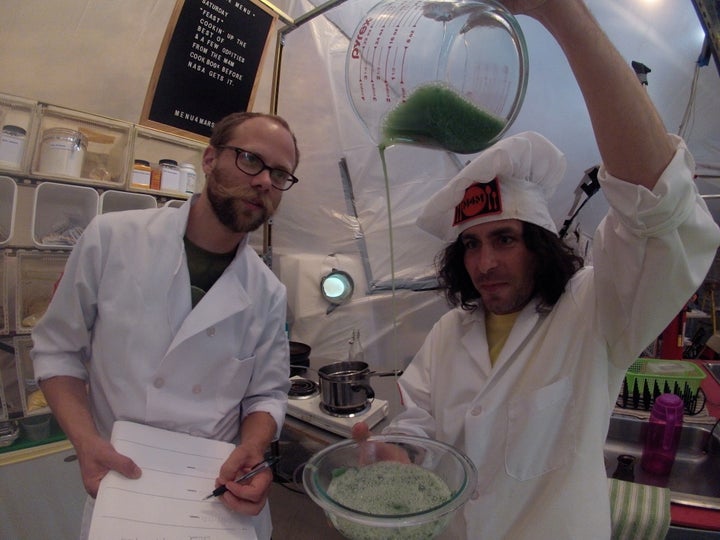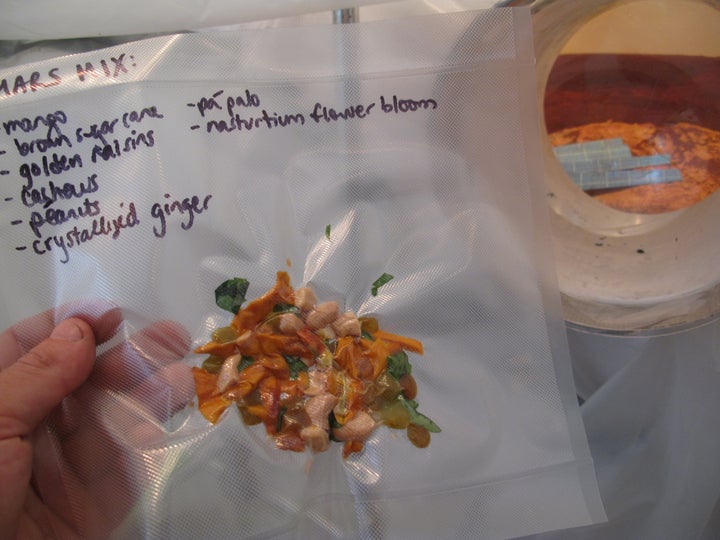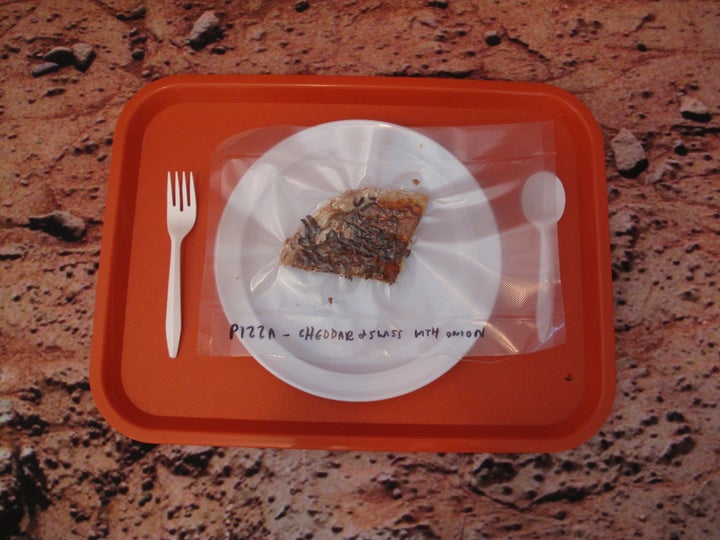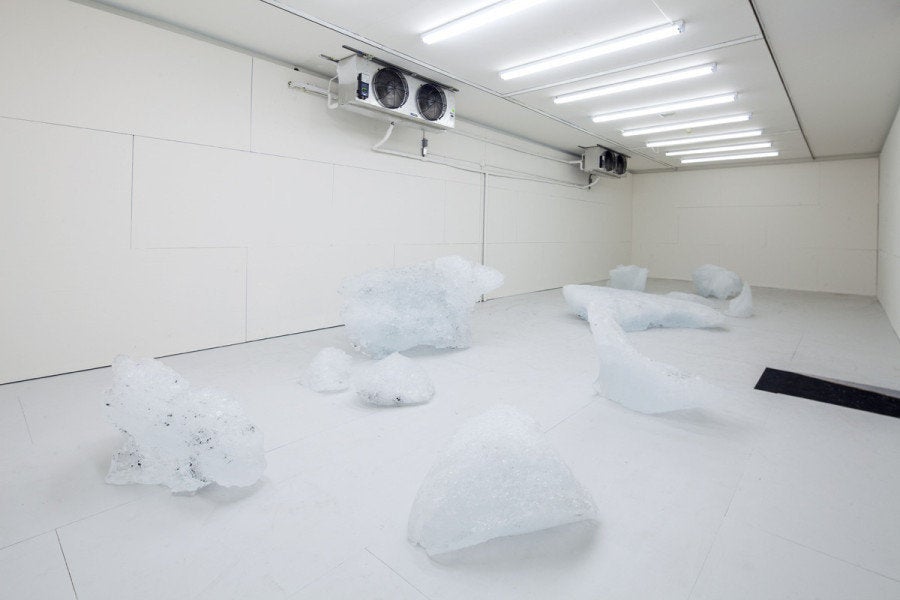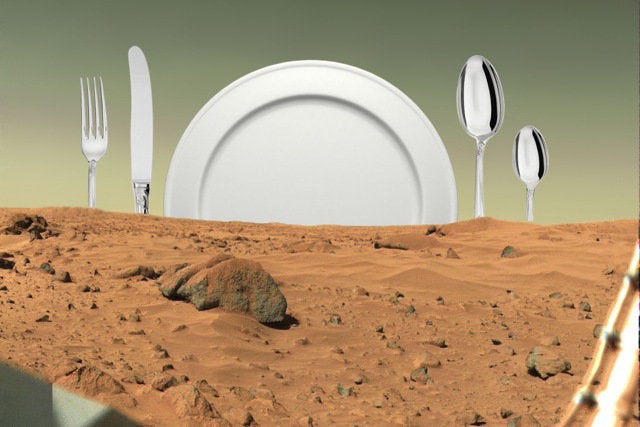
It's a question at least one person applying to hop on board Mars One -- the curious project that aims to send a permanent human colony to the Red Planet by 2027 -- must have asked. I repeat: will there be pizza on Mars? Because if you're contemplating a one-way ticket to Mars, I'd imagine you've spent some time pondering the culinary possibilities of a dusty, uninhabited planet.
Well, thanks to artists Heidi Neilson and Douglas Paulson, the answer is: pizza is possible.
Neilson and Paulson are the minds behind "The Menu for Mars Kitchen," an art show that was on view at Pierogi Gallery's Boiler space in Brooklyn, New York, earlier this summer. The two created their very own Mars Supper Club aimed at figuring out a menu of meals that could plausibly be cooked and consumed on a planet with no naturally occurring liquid water. Together they built a kitchen and held workshops with expert guests, testing off-Earth cultivation of edible plants and the murkiness of food preservation. The dishes they created in the Boiler space became protoypes for a menu they're actually sending to NASA.

Now that the show has closed, Neilson and Paulson might be our foremost authority on Martian cooking outside of the space agency. They graciously agreed to chat via email about their Mars-feasible dishes and the future of interplanetary supper clubs.
How did a "supper club" become your experimental template for imagining the future? What exactly inspired this project?
Each month we went to a restaurant that serves food from a country with an active space program. New York City is full of amazing restaurants with cuisines from around the world, and people from around the world who have adapted their food cultures to their new location with different resources and different audiences. We wanted to think about how the world’s food might migrate to Mars not just [for] an Americana palate. For example -- Ethiopian food would be a good choice for cooking on Mars. It includes lots of grains that are good at filling you up, and don’t necessary require significant amounts of water to grow.
Each supper club outing we would invite a guest with relevant expertise to consider how an aspect of food or agriculture would or wouldn’t work on Mars. We spoke with astrophysicists, gardeners, composters, nutritionists, etc., and would also look at the menu of the restaurants we visited to see what kinds of foods would be Mars-feasible.

Who were these experts, and what were some of the most pressing needs you had to accommodate?
Mars is quite far and quite physically different from Earth, and so some pressing needs were figuring out how to deal with foods with a very long shelf life (five years optimally), figuring out how the food would actually be cooked within a pressurized environment with potentially different gas mixture (no flames), and how the food might taste and feel on Mars -- it will likely smell like peroxide and it will be hard to avoid dust in it. A big need also is psychological. Food will be a really important outlet to break up boredom and hopefully offer a respite from a possibly bleak existence on Mars.
Arlin Crotts, an astrophysicist who has researched living on the moon, helped us out in imagining the flavor and smells of Mars. Gil Lopez, a community garden activist, presented ways of growing and eating fungus and insects, such as crickets and mealworms, as a way of introducing fresh food. Ann Nunziata, a certified Natural Foods Chef at NYC’s Natural Gourmet Institute, came and spoke with us about food energetics -- the holistic study of how food is prepared -- and how it might apply to Mars.
What are some of the Mars-feasible dishes you came up with? Do you have a favorite "recipe"?
The Menu For Mars Kitchen included a pantry of Mars-feasible ingredients and a greenhouse of edible weeds. We’ve imagined that the Kitchen represents the first year (or more) on Mars. We think the first people will arrive to food that will have been sent there ahead of them -- so our pantry is all dried, powdered, or thermo-stabilized foods. We included many familiar basics: lentils, chickpeas, other grains and dried spices. And some unusual ones: powdered cheeses, cricket flour, powdered plant protein, powdered butter.
The greenhouse featured edible weeds because they’re survivors. Unlike say, tomatoes, weeds can adapt quickly and can grow in harsh conditions or with very little water, so they would be a much better choice to take to Mars. We also had a cricket farm of about 1,000 crickets -- which would be more realistic sources of protein than livestock.
It was always interesting when people would try to make something they make often at home, but make it in a Mars-feasible way. One that turned out in a really strange way was an cheese omelette -- made with powdered egg and powdered cheese -- it turned into something that looked like and had the consistency of a small off-yellow pancake, but was actually pretty good. The variation on Burmese fermented tea leaf salad was great.
Given that many of the recipes looked similar -- grains with a variety of raisins or chili peppers or other dried seasonings -- it was also nice when dishes were really sculptural. One chef made a microwaved green tea cake that looked great -- though it wasn’t super tasty. (Editor's note: Heidi liked it).
I made several pizzas using my mom’s recipe and they turned out pretty normal -- though the powdered cheese turned kind of black in the oven. After a month of tasting these foods, I found that I really craved fresh fruits and vegetables -- even though I was only eating at the Mars Kitchen a meal or two a day for several days a week.
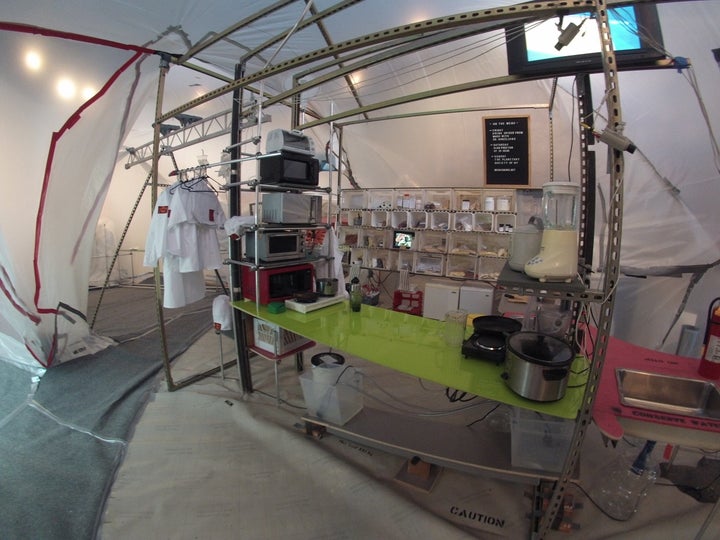
The exhibition description mentioned that "a summary of findings will be sent to NASA to augment their preparations for colonizing Mars." Has this happened?
The exhibition ended and we’re compiling our report for NASA now. This will consist of the recipes we’ve collected, photos of the food, process and participants and actual test recipe samples.
Do you have future plans for the project? Will we be seeing more interplanetary Supper Clubs?
We’ve been excited by the good response in both the Supper Club and the Kitchen -- and there’s clearly a lot of interest out there for more. One of the things that’s really been wonderful about the project is that it brings together a lot of people with different interest and areas of expertise, and interesting people have been coming out of the woodwork and expanding the horizons of the project. So we’re thinking now about how the experiment could grow to include what we’ve done in the Kitchen, and involving new participants.
Beyond NASA, what are you hoping everyday audiences take away from this project?
In our studies over the last year we were really impressed with how great we have it here on Earth. Along with fresh food and seasonal specialties, we can go outside without a spacesuit and feel the sun and breeze. We’re hoping people will take away such an appreciation of our home planet. The first people on Mars will possibly never go outside again, and preparing Mars -- or a tiny piece of it -- to be sustainably inhabitable will be an extremely significant amount of time and work.
